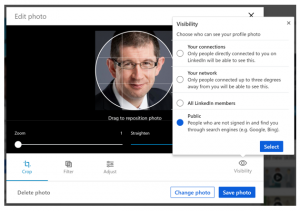Ever gotten an email like this?
“Hey! I love your product. It’s the perfect solution for our company! But we’re a small business, just me and a developer, and there’s no way we can afford your pricing. Any chance you could give us a discount?”
Discount requests like this happen all the time. You could be selling your product for $ 5 and you’d still have people asking for a discount. So what do you do?
Most sales reps listen to their story, weigh the pros and cons, and decide whether to make an exception.
Don’t be like the rest.
Often times giving discounts causes more harm than good. Let’s take a look at how discounting hurts your business, and how you should respond.
Why discounts create unhappy and unreliable customers
Giving discounts can be tempting. After all, you get to provide a service to someone in need and get a new customer, right?
Sure, that’s part of it. But keep in mind that not all customers are equal. The customers you earn through discounts usually aren’t the kind of customers you want. Here’s why:
They’re buying for the wrong reason
There are two types of customers, those who negotiate price and those who negotiate value.
Unless your entire product focuses on being the cheapest on the market, you don’t want price-focused customers. Their only loyalty is to the lowest price. As soon as someone comes along and offers a cheaper solution, they’ll be gone.
You’re starting the relationship off on the wrong foot
Demanding prospects make for demanding customers. If you show them that you’re willing to bend to their every desire, they’ll take advantage of it.
Customers who pay less want 24/7 phone support, weekly updates, and a direct line to your CEO. The moment you stop meeting every request, they start searching for someone who will.
You risk offending current customers
What’s this one prospect worth to you? Are they worth losing a long-time customer? Because that may be the price you pay when you give a discount.
The more specific your target market, the more likely your customers will talk to one another. One of your customers may find out a competitor is getting your product at a discount and they won’t be happy.
How to respond to discount requests
So if you’re not going to give them a discount, what can you do?
First, you need to make sure they’re qualified for your product. Second, you need to help them measure that value. And third, you need to stand by your price. Here’s how to do it:
Transition from price-focus to product-focus
A lot of discount requests come from prospects who haven’t even tried your product yet. They say, “It’s not worth trying until I know if I’ll get a discount.” When you run into these prospects, your first priority should be to get them on your trial. Here’s how to deal with those prospects:
“Hey [Prospect Name],
Thanks for inquiring about our product. Before we talk price, let’s make sure our product is a good fit for you. Why don’t you sign up for our free trial and give it a go? If you like what you see, I bet we can find a price that makes both of us happy. Sound fair?”
More often than not, your prospects will come back with one of three responses:
“Sure, I’ll sign up for the trial right away,”
“I’ve already tried your product and it seems like a good fit,” or
“I don’t want to sign up until we’ve settled on a price.”
If they agree to a trial, that’s great news. As they use your product, they’ll transition from a price-mindset into a product mindset. If their trial expires, offer to extend it by a couple days so they experience the full scope of value you provide.
And if they’re unwilling to sign up for a trial until you’ve promised a discount, let them go. That’s a huge red flag, and a clear indicator they aren’t the type of customer you want to do business with anyway.
Transition from product-focus to value-focus
As your prospect gets comfortable with the product they will ask themselves if your solution is valuable enough. As they ask this question, they’ll transition from a product mindset to a value mindset. The great thing about that question is that it’s binary: The answer is either “yes” or “no.”
If the answer’s “no,” that’s great. It means you’ve saved yourself and your prospect both time and money and you can go your separate ways. If their answer is “yes,” you’ve found a customer who is likely to be happy and successful with your product. They might still have some pricing objections, but that’s alright.
Overcoming post-trial discount requests
If your prospect still asks for a discount after the trial, you’ve got a different problem on your hands. In most cases, your prospect can afford to buy your product. They just don’t want to. You need to figure out why. Here’s how to ask questions to uncover your prospect’s real concerns:
Prospect: “You’ve got a great product, but we need that discount if we’re going to make this work.”
Salesperson: “I understand your position, and I want to be sensitive to it. But I feel like there’s something else going on. Tell me this: Do you love the product? Do you feel it’s worth the price? Or are we overcharging?”
Prospect: “No, it’s not that. We love the product, and it is worth the price. We just can’t afford it.”
Salesperson: “Okay, then at what price would you be willing to buy?”
Prospect: “We could do $ 500, but that’s it.”
Salesperson: Alright, so just to confirm: If I offer our product for $ 500, you’d buy right here and now?”
At this point, your prospect can only answer in one of two ways. If they say “yes,” you’ll know their objection is about price. In that case, let them go.
More often than not, they’ll say something like, “Well, then we’d have to look at…” And once you know their real concerns, you can follow up.
How to say “no” (and still be valuable)
Your goal isn’t to sell to every prospect; it’s to sell to the right ones. The next time you get an unreasonable discount request, try responding like this:
“I appreciate your interest in our product, but I can’t give you that discount. I understand your position, but our priority is being valuable. It wouldn’t be fair to offer you a discount while the rest of our users pay full price. If you ever change your mind, I’d love to have you as a customer. But until then, I did some research and found a few affordable alternatives for you.”
They key to rejecting a prospect is to still provide them as much value as possible. One of the easiest ways to do that is to direct them to a more affordable alternative to your product. You’ll lose a customer in the short term, but that’s okay. They weren’t right for you and you weren’t right for them. Chances are they come back to you sometime in the future, once they’re ready to pay what your product is worth.
Pitch value, not price
At Close.io, we have an (almost) “zero discount” policy. Unless a prospect is buying an annual contract, we don’t make exceptions to our pricing. Period. I challenge you to adopt a similar policy at your business.
Sure, you’ll lose some deals. But that’s okay: If you never lose a customer over price, your product is too cheap, anyway.
So next time you get a discount request, resist the urge to give in. Use the scripts above, then come back here and share your experience.
I’ll look forward to hearing your story but, until then, get back out there and crush it.
Business & Finance Articles on Business 2 Community(61)






